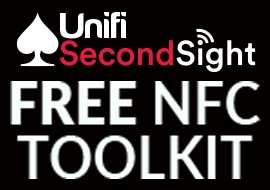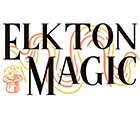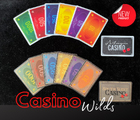Taking Photographs for The Linking Ring
Quality photos add much to a Ring Event article. They are an important way to bring recognition to performers and other contributors to an event. Taking photographs for publication is not easy. The following are some guidelines that will improve your picture taking and sending.
This seems obvious, but obviously isn't. Read, no study, the instruction manual which comes with your camera. There are many tips and suggestions that will help you avoid mistakes and take good photos.
Taking Photos
Take lots of photos and send only the best.
Many photos arrive out of focus. Focus, focus, focus!
Avoid automatic/self-developing cameras, as their photos are usually not sharp.
Avoid if at all possible sending photos with dates printed on them.
Check the background. Avoid cluttered, unattractive areas that detract from the subject. Don't shoot against a window or mirrored wall with a flash. Don't shoot toward the sun.
Get as close to your subjects as you can. Generally shoot above the waist. Normally if you get the whole person in your viewfinder you are too far away. As a general rule, if the face on a 3" x 5" photo is not as large as the tip of your thumb, it is too small.
Most Event photos now are printed in color. Shooting in color is easier and quite effective. However, remember that red will reproduce as black or, at best, gray, so a black tuxedo will disappear against a red curtain and a red jacket fades into a black curtain.
A head-on flash photo will cause eyes to turn red in a photo and without adequate back lighting can cause a heavy black shadow around the subject. Avoid this if at all possible.
Vary your position. When shooting a show whether stage or close-up, shoot from both sides so that all of the photos do not show the performers facing in the same direction. A few from the middle won't hurt, either.
Action photos are the most interesting as they tell a story. However, magic is difficult to photograph. Levitations and some apparatus magic (Zig-Zags, sawings, Snowstorm, penetrations) can show the magic. Use your knowledge of the sequence and climaxes of tricks and your imagination to take photos at the right time.
Get a group shot! As a safety measure, get your performers into small groups at the end of the show, ideally while still "in costume." This will result in planned photos in which the individuals are recognizable.
For group shots, if possible, limit the number in the photo to ten. More than two rows of people almost always cause focus problems. Take careful notes of all names and get the spelling right by checking with each person.
When taking shots of larger groups avoid more than three rows deep and then focus on the middle row. Have your subjects stand close together, angle their shoulders diagonally to take up less side-to-side space, and shoot them above the waist.
When taking award photos, avoid taking several with the same person handing out awards to different people. Instead, line up the award winners facing toward the giver and shoot them all at once.
Try to get the names of every person in a photograph, especially magicians and I.B.M. members. How would you like your photo printed in our journal with no identification? We avoid printing photos with unidentified persons in them.
Develop photos immediately after the event. Do not hold up the Event Report awaiting photos. With today's rapid photo services, there is no excuse for tardy photos. Get at least two copies of each photo. Things happen, always keep a copy of each photo sent until they appear (or clearly won't appear) in our journal.
Do NOT write on the back of photos. Modern scanners are so sensitive they can pick up writing on the back of photos. Writing in ink often smears off on the next photo in a stack. Write or type on self-adhesive stickers or paper which you can cellophane tape on the back of the photos. Do not paperclip notes onto photos.
Finally, before going off to take photo, re-read the above!
Sending Photos
Actual photos may be sent or they may be emailed. They may be sent separately from the Event shown as long as the Event, its sponsors, and the people in the photos are identified.
If emailed, do NOT embed photos in the email because they will download as text. Send them as individual (or zipped attachments. Ideally, send them in jpeg or as pdf files, 300 dpi, color or grayscale (if in Black and white), actual size. If you can't send an attachment, send individual photos in the body of the email with absolutely no text with the photo. Put identification in the email subject line.
Photos should be sent as they come from the camera. Do not modify, crop, or try to improve them. Tony Dunn does this all the time and can almost certainly do it better. If you can't scan them in known dpi, send them direct from (or as they come from) the camera.
Identify clearly, in the email subject if possible, what they are (as: "R 2 Event Photos," or "R 129 Event Report & Photos"). Identify each photo with the Ring or Event, and with what is shown, as: "R 199 Ray Wickam" (naming the person or first person in the photo).
If you have written suggested captions, key them to the photos with numbers. Again, please identify all shown if possible.
Send all photos to T.J. Shimeld at ringreports@magician.org.
Thanks! Good photos are so important.













